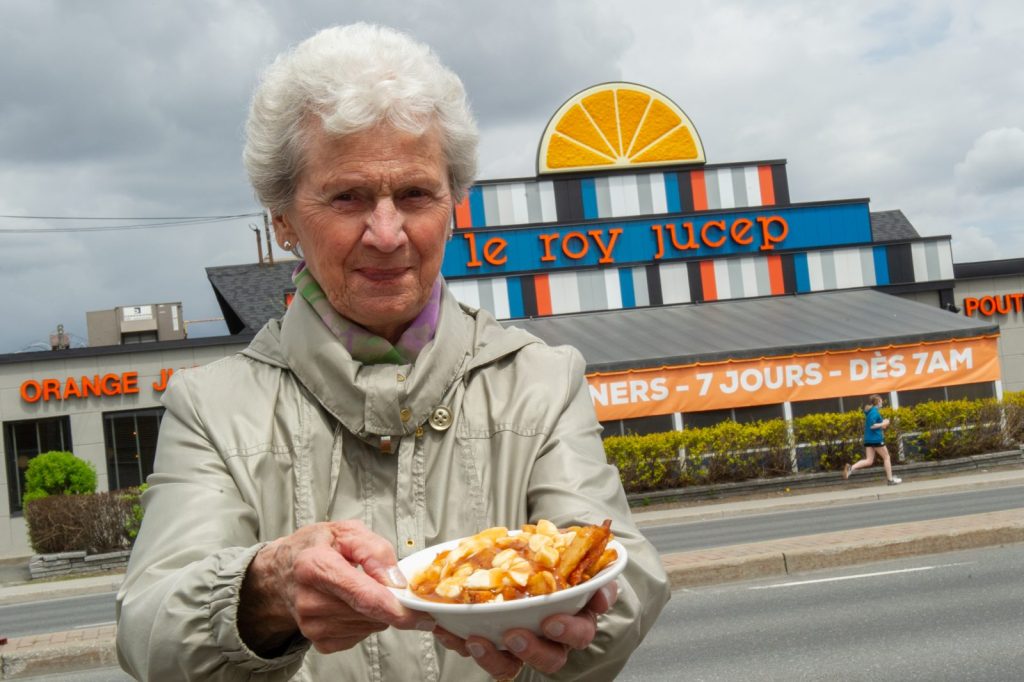
If you are visiting Comedyville Comedy Club from outside of Canada, there is a possibility that you may not be familiar with Canada’s national dish: poutine. If you are Canadian, just reading the words may have you craving a warm, delicious batch right now. Regardless of where you are from, you likely don’t know the full story of the origins of this delectable French-Canadian dish. Let’s take a look at all you need to know about the origins of La Poutine.
What Is Poutine?
When you think about Canada, there are likely many things that come to mind. The nation is well known for its welcoming people, beautiful scenery, and wildlife. However, when it comes to food, the national dish of Canada is poutine. A survey found that 21% of Canadians listed poutine as their favourite iconic Canadian food, giving it first place over things such as maple syrup and lobster.
Poutine is a relatively simple dish, which is likely one of the reasons it has grown such in popularity. It is fairly easy for any restaurant to add it to their menu. It is also a warm, hearty dish that is perfect for Canada’s cold winters. This dish consists of three essential ingredients:
- French Fries. Specifically, these are traditionally fairly thick and prepared in a manner where they are crispy on the outside yet soft on the inside.
- Cheese Curds. Cheese curds for poutine must be fresh. They also should soften up while still maintaining their texture when the dish is served.
- Gravy. Traditionally, this is a brown gravy that is thin enough to penetrate the gaps in the dish without being watery, providing the perfect consistency.
Where Did Poutine Originate?
When looking at the history and origins of la poutine, there is not a clear cut answer as to the first place to serve the dish. In fact, you will find several restaurants and regions laying claim to the potential origin of this dish. The one thing that is well-established is that the dish originated within Quebec. Making poutine a distinctly Quebec creation in the 1950’s. Let’s look at the history of how we got to this tasty dish that you’ll find on menus throughout Canada.
Le Lutin qui Rit
The most prevailing theory regarding the origins of la poutine brings us to 1957 rural Quebec and the small dairy farming town of Warwick. This is by far the most widespread version of the story for many Quebec residents. A restaurant in this town, Le Lutin qui Rit (The Laughing Elf), served both French fries and cheese curds separately on their menu.
The story has it that one day, a trucker, Eddy Lainesse, passing through stopped at the restaurant and requested that these two items be combined in one dish for them to eat on the go. The restauranteur, Fernand Lachance, complied and remarked that the dish was “poutine,” Quebec slang for “a mess.” The dish caught on and was soon added to the restaurant’s regular menu.

Fernand Lachance and Eddy Lainesse
(Source: Lachance.org)
Le Roy Jucep
While most residents of Quebec accept Le Lutin qui Rit as the birthplace of poutine, this is not without controversy. A restaurant called Le Roy Jucep in the town of Drummondville also lodges a claim to be the inventor of poutine. As you may have noticed, the creation from Warwick was missing a key ingredient in the classic poutine – the delicious gravy. This was added to the creation by Le Roy Jucep owner Jean-Paul Roy.
Once again, the story of origins of la poutine centers around a truck driver. In 1964, a trucker popped into the Drummondville restaurant, requesting that the cook add a side order of fresh cheese curds atop a plate of fries and gravy – a dish already regularly served by the restaurant. By all accounts, this became the first time when the three ingredients are noted as being served together in one dish.
Le Roy Jucep, which still stands in Drummondville today, has even registered a trademark noting it as the inventor of poutine. Visitors to the restaurant, located northeast of Montreal, will find a plaque denoting this fact.

They managed the Roy Jucep for 30 years.
(Photo: Ghyslain Bergeron – Source: Journalexpress.ca)
Other Possibilities
While these two are the leading contenders for the crown of inventor of poutine – and both likely made important contributions to its creation – there are other places where the creation could have occurred. For example, a restaurant in Princeville called La P’tite Vache served a dish called “mixte” which was one-half fries and one-half cheese curds while topped with gravy. While this dish was created a few years after Le Roy Jucep’s creation, it seems to have been created independently.
Additionally, the dish was served in the regions of Nicolet and Saint-Hyacinthe. Both of which had a large number of cheese dairies that produced cheese curds. Thus, it is not surprising that someone else may have stumbled upon this tasty combination. In other words, it seems that many different places may have had similar ideas over a similar time period. Thus, the true inventor of poutine remains a bit of a mystery.
Poutine: A National Dish
Regardless of the origin, the popularity of poutine took off. In the early stages, it was largely spread by word of mouth of truckers. Today, you can find it throughout Canada. However, Quebec remains the place to go for the best poutine in the world. Montreal seemingly has a poutine restaurant on every block.
Canada’s national dish can be found in fast food restaurants throughout the nation. Meanwhile, many places have put their own spin on this classic. There are even fine dining establishments getting into the mix by adding things like lobster or foie gras. You may even stumble onto a poutine dish in other countries around the world. I recently saw it on a menu in Scotland, a testament to the dish’s appeal.
As you enjoy Montreal stand-up, be sure to venture out to discover more of our culture including Canada’s most famous culinary creation, La Poutine.
Post by Eddie Case, exclusively for Comedyville.ca, All rights reserved.
Comedyville is a Comedy Club located in Downtown Montreal.


 Previous Post
Previous Post Next Post
Next Post